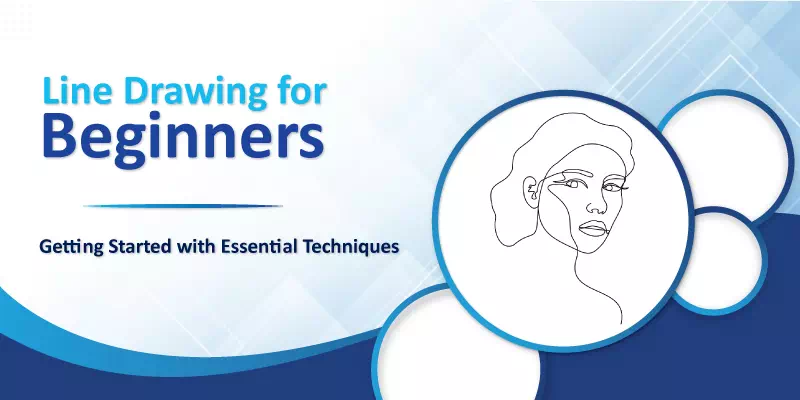Line drawing is a testament to the beauty that can be found in simplicity. It’s a practice where the elegance of minimalism meets the creativity of imagination. Exploring line drawing techniques reveals their fundamental significance in artistic expression and beyond.
These skills go beyond wielding a pen or pencil; they are the language through which ideas, emotions and observations are communicated with precision. Whether you’re an artist or designer, mastering these techniques sharpens your perception and interpretation abilities.
Definition of Line Drawing
A line drawing is a type of artwork created primarily using lines, whether drawn with a pencil, pen or other tools. These lines can be simple or intricate, continuous or fragmented. They are used to outline, define and detail subjects, conveying organic shapes, forms and textures with precision.
Line drawings often focus on contour and structure, employing various techniques to capture both realism and abstraction. They are the versatile and expressive mode of artistic representation.
Line Drawing Techniques for Beginners
Mastering various drawing techniques opens up a world of creative possibilities for the beginners. Through these essential line drawing tips artists will be able to express their unique visions on paper.
Contour Drawing
Contour drawing is a fundamental line drawing technique where professional artists create outlines of subjects using continuous, unbroken lines. Whether capturing graceful curves of a human figure or the intricate details of a flower, contour drawing emphasizes precise observation and hand-eye coordination.
This versatile technique can produce both realistic representations and expressive. Whether as a warm-up exercise or a standalone artwork, contour drawing offers a profound understanding of shapes, forms and the art of seeing.
Cross-Hatching
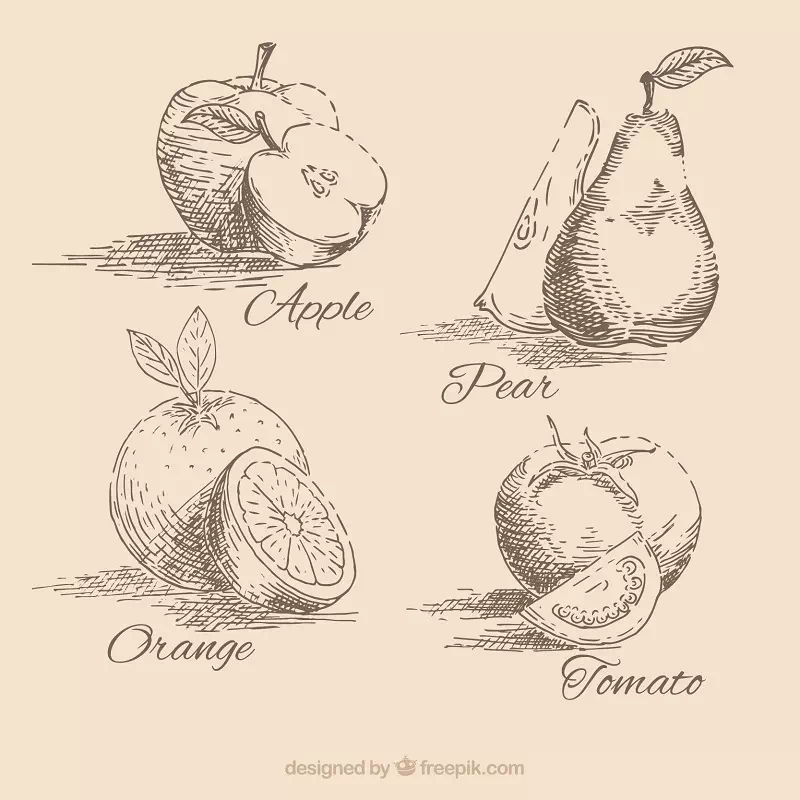
Cross-hatching is a classic line drawing technique that involves the use of intersecting lines to create shading, depth and texture in an artwork. This method is particularly useful for adding dimension and tonal values to a drawing.
It’s commonly employed in pen and ink illustrations, comics and fine art. By varying the spacing, angle and density of the lines, artists can achieve a wide range of shading effects.
Hatching
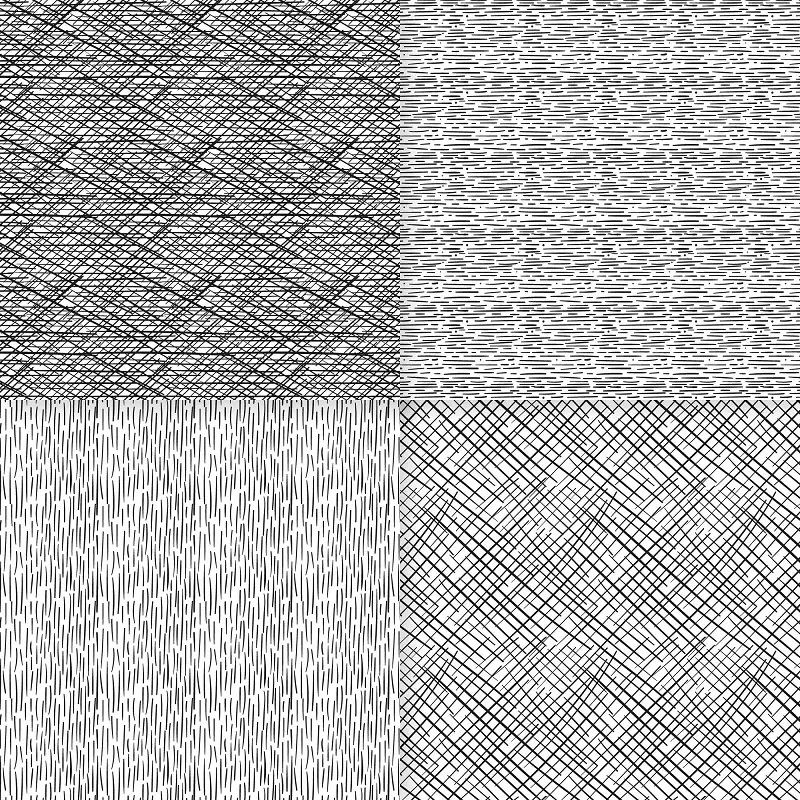
Hatching is a fundamental line drawing technique where artists use parallel lines to create shading and value in their artwork. By adjusting the density, spacing and angle of these lines, artists can achieve various levels of darkness and texture. Hatching is widely employed in pencil and pen drawings.
It offers a versatile method for capturing depth and form in a wide range of subjects, from still life to portraiture drawing. It’s a skill that enhances an artist’s ability to convey light, shadow and dimension in their creations.
Scribble Drawing
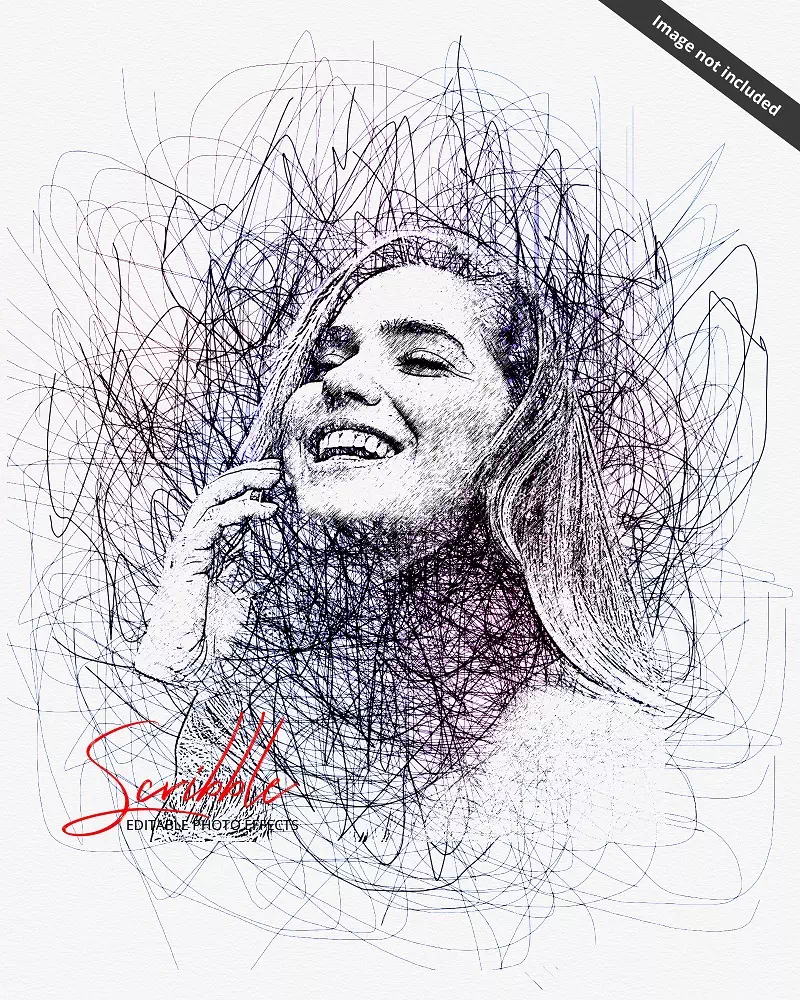
Scribble drawing is a unique and expressive drawing technique for novices where artists create images using a series of spontaneous, chaotic and overlapping scribbles. This method often results in abstract or semi-abstract artworks characterized by a sense of energy, movement and unpredictability.
While it might appear haphazard, scribble drawing requires a degree of control and intentionality to guide the scribbles into forming recognizable shapes or subjects. It’s a creative and playful technique, offering artists the freedom to experiment with line and form in unconventional ways.
Blind Contour Drawing
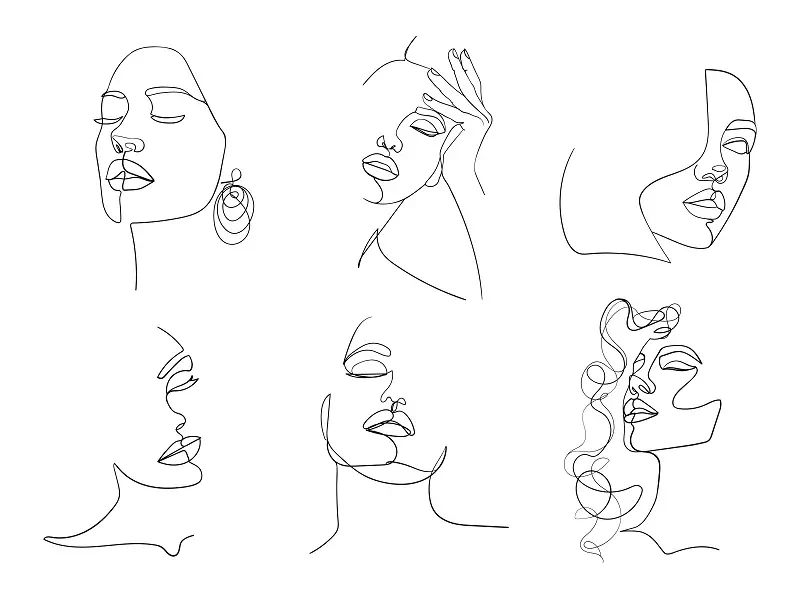
Blind contour drawing is a simple line drawing exercise that challenges artists to closely observe their subject without looking at the paper while drawing. This results in drawings that often appear abstract or distorted but are rich in details and nuances. Blind contour drawing is an exercise in hand-eye coordination and careful observation.
It helps artists to develop their understanding of shapes, proportions, and the subtleties of lines. It encourages a deeper connection between the artist and the subject, fostering both technical skill and artistic expression.
Single-Line Drawing
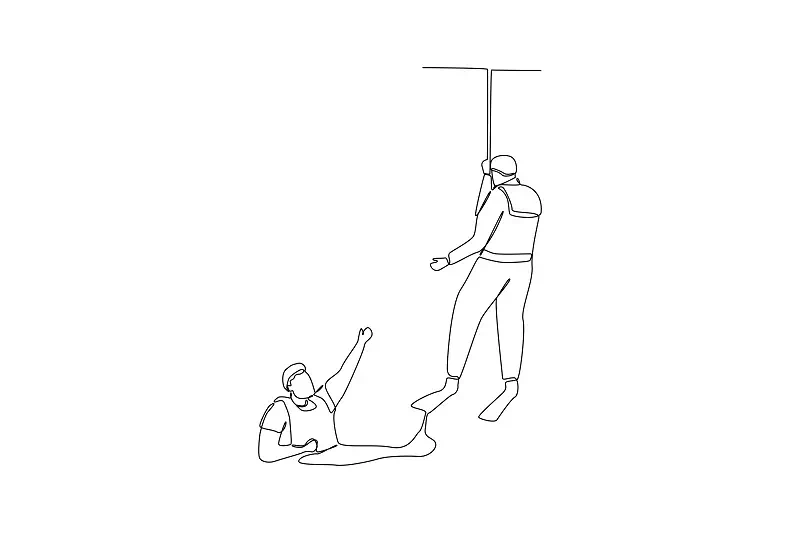
Single-line drawing is an easy drawing technique where the entire artwork is created using a continuous, unbroken line. Artists challenge themselves to capture the essence of the subject or scene without lifting the pen or pencil from the paper. This technique encourages a simplified and minimalist approach.
Besides, single-line drawing places a premium on precision, as every stroke contributes to the final composition. It’s an intriguing exercise in artistic restraint and can produce striking, minimalist artwork with a unique visual appeal.
Technical Line Drawing

Technical line drawing is a precise and detail-oriented approach commonly used in engineering, architecture and technical illustration. This technique emphasizes accuracy, clarity and attention to scale and proportion. Artists use straight lines, geometric shapes and precise measurements to create highly detailed and technical drawings, often depicting machinery, buildings or intricate diagrams.
And, this drawing plays a crucial role in conveying complex information visually. This essential line drawing tip is valued for its precision and communicative power in various technical fields.
Calligraphic Drawing
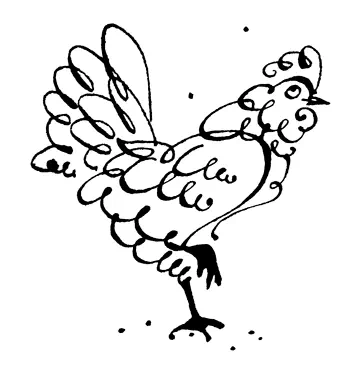
Calligraphic drawing is an expressive line drawing process that draws inspiration from the art of calligraphy. Lines are created with fluidity and a sense of rhythm in this method. Artists use varying line weights, curves and gestures to create dynamic and visually engaging drawings.
This technique is often associated with energy and movement, allowing artists to convey emotions and capture the essence of their subject with a unique calligraphic flair. Calligraphic drawing is employed in a range of artistic styles, from traditional ink drawings to contemporary.
Suggested Article– Best Free Calligraphy Fonts.
Linear Perspective Drawing
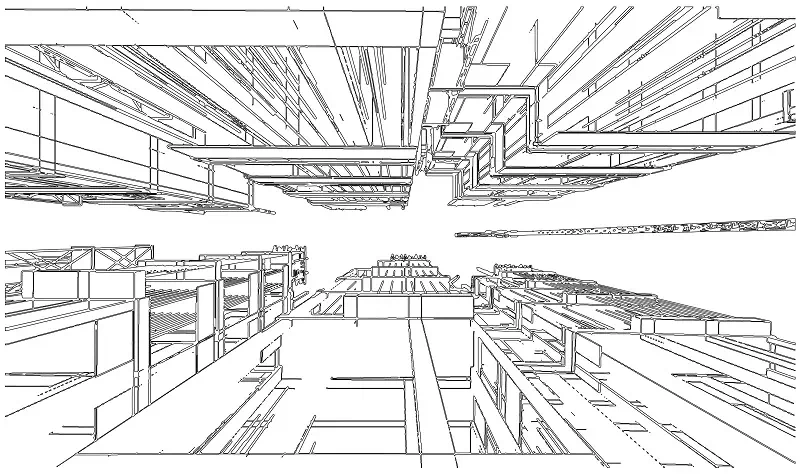
Linear perspective drawing is a fundamental technique in art and architecture that allows artists to create the illusion of depth and three-dimensionality on a two-dimensional surface. This technique relies on the use of converging lines and a vanishing point to accurately depict objects in space. Linear perspective drawing is especially useful for architectural renderings and realistic scenes.
It provides a systematic approach to portraying spatial relationships, scale and perspective. By mastering this technique, artists can achieve realistic and convincing depictions of environments and objects in their drawings.
Emotive Line Drawing
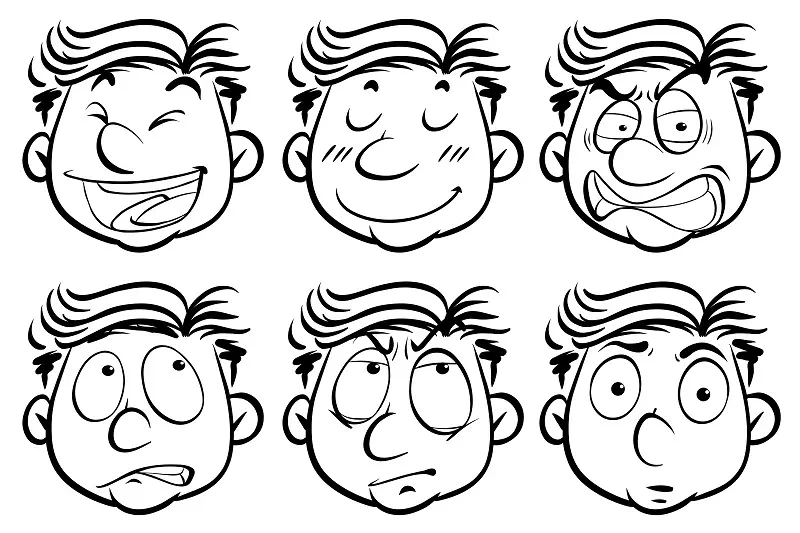
Emotive line drawing is an essential technique for beginner artist. This style prioritizes capturing and conveying emotions, moods or feelings through the use of lines. Artists use various line qualities, such as thickness, curvature and intensity, to evoke specific emotional responses in their viewers.
This technique often involves gestural and spontaneous mark-making. Artists can infuse their drawings with energy and sentiment by learning this line art. Emotive line drawing is a powerful tool for artists seeking to communicate their inner thoughts and feelings.
Suggested Article– Homies Drawing Ideas.
Manga and Comic Art
Manga and comic art represent an exclusive line drawing technique widely used in the creation of comic books, graphic novels and manga. This style employs a combination of expressive lines and various line weights to depict characters, action and narrative sequences. Besides, this technique allows for a wide range of stylistic choices. It is a versatile and dynamic form of line drawing with a strong narrative focus.
Zen Drawing
Zen drawing, also known as Zen art or Zen doodling, is a meditative and mindful line drawing technique that aims to promote relaxation, focus and inner calm. Artists create repetitive, flowing and often intricate patterns and designs using simple lines and shapes. Zen drawing is not focused on representing realistic subjects but rather on the process of drawing itself as a form of meditation and self-expression.
It encourages artists to let go of perfectionism and embrace the present moment. This practice can be both soothing and therapeutic, offering a peaceful and creative way to unwind and connect with one’s inner self.
Continuous Line Drawing
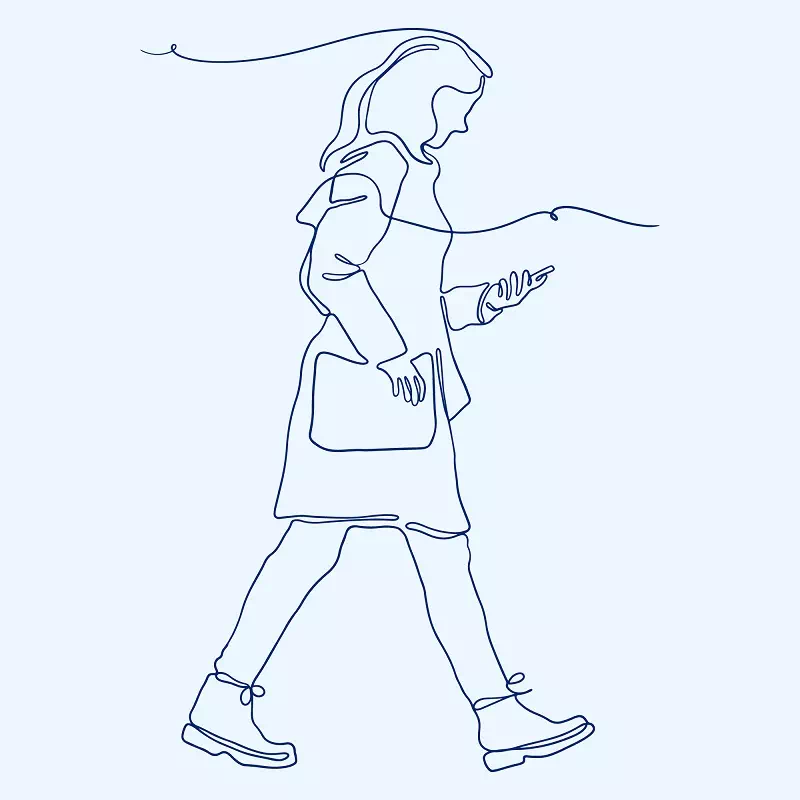
Continuous line drawing is a captivating line drawing technique. Here artists create an entire artwork without lifting their pen or pencil from the paper. This system results in a single, unbroken line that forms the entire composition. Continuous line drawing is celebrated for its simplicity, minimalism and ability to capture the essence of a subject with a single, flowing stroke.
It often produces abstract or semi-abstract representations that leave room for interpretation. Viewers can engage with the artwork on a more emotional and imaginative level. This technique can be both challenging and liberating, which offers a unique approach to line drawing.
Stippling
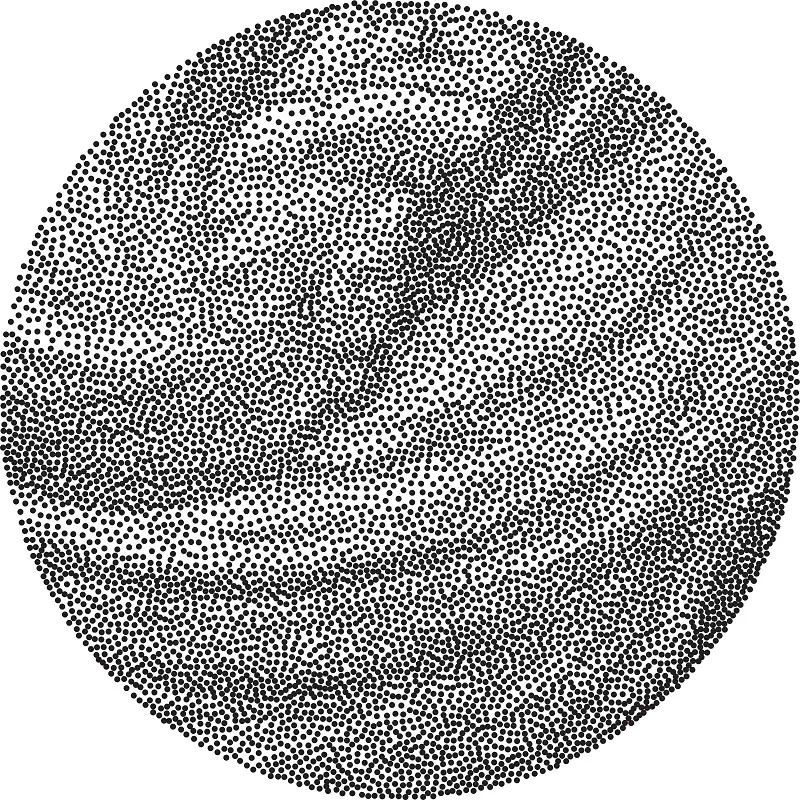
Stippling is a meticulous and labor-intensive line drawing process. It involves creating images using small, individual dots or stippled marks. These dots can vary in density, size and spacing to convey values, tones and textures. Stippling demands patience and precision, as artists gradually build up areas of light and shadow with countless tiny dots.
It’s a technique often used for detailed illustrations, pointillism and scientific illustrations. You will be able to capture intricate details and achieve a range of tones and textures in a drawing through this distinct practice.
How to Create Line Drawing: Step-By-Step Guide
Creating a line drawing is a rewarding and accessible art form for beginners. Here’s our step-by-step guideline:
Step 1: Choose Your Subject: Begin by selecting a subject for your drawing. It could be an object, a person, a scene or anything that inspires you.
Step 2: Observe and Analyze: Take a moment to observe your subject closely. Pay attention to its contours, shapes and important details.
Step 3: Start with an Outline: Begin drawing by lightly sketching the basic outline of your subject. Use simple lines to capture its main shapes and proportions.
Step 4: Define Contours: Now, Pay close attention to the curves and edges of your subject. Take your time to get these lines as accurate as possible.
Step 5: Add Details: Once you have the main contours, start adding important details like facial features, textures or any intricate elements. Use a steady hand and light strokes.
Step 6: Experiment with Line Weight: Experiment with varying line weight to add depth and dimension to your drawing. Use thicker lines for areas in shadow and lighter lines for highlights.
Step 7: Erase Guidelines: If you have any initial guidelines or construction lines, gently erase them to clean up your drawing.
Step 8: Finalize Your Drawing: Review your drawing and make any necessary adjustments. Ensure that all lines are clean and accurate.
Step 9: Share Your Art: Don’t be afraid to share your line drawings with others, whether through social media, art communities or with friends and family.
Common Mistakes and How to Avoid Them
Some common pitfalls can hinder progress and creative expression. In this guide, we’ll explore the most frequent missteps encountered in line drawing and provide invaluable insights on how to steer clear of them.
Over-complicating Details:
Mistake: Trying to include every detail can overwhelm your drawing and make it cluttered.
Solution: Simplify your subject by focusing on the essential details. Choose what’s most important to convey.
Inconsistent Line Weight:
Mistake: Using the same line thickness for everything can make your drawing appear flat.
Solution: Vary your line weight to emphasize depth and highlights. Thicker lines for shadows, thinner lines for contours.
Ignoring Proportions:
Mistake: Neglecting accurate proportions can result in distorted drawings.
Solution: Pay close attention to proportions and use measuring techniques like comparative measuring to ensure accuracy.
Rushing the Drawing:
Mistake: Hastily completing a drawing can lead to mistakes and imprecise lines.
Solution: Take your time, work patiently, and plan your drawing before diving into details.
Not Using References:
Mistake: Drawing from memory can result in inaccuracies.
Solution: Always use references when drawing objects, scenes or figures. They provide valuable guidance and accuracy.
Conclusion
The essential line drawing techniques we’ve explored here provide a versatile toolkit for artists. These techniques open doors to diverse artistic possibilities. Remember that the path of art is a rewarding and evolving one. Line drawing is not just about lines on paper.
It’s about self-discovery, observation and the joy of creation. Learn from every stroke, every mistake and every breakthrough. The more you practice, the more your skills will flourish. Your artistic journey is uniquely yours, and every line you draw is a step towards unlocking your creative potential.
FAQs
What is line drawing?
Line drawing is a form of art where images are created using lines as the primary medium.
Why is it a good starting point for beginners?
It’s an excellent starting point for beginners because it teaches fundamental artistic concepts like form, shape, and contour without the complexity of shading and color.
Do I need prior art experience to start learning line drawing?
There is no need of prior art experience. Line drawing is accessible to everyone, making it an ideal choice for beginners.
What materials do I need to start line drawing?
You’ll need some basic supplies, including paper, pencils, erasers, and a steady surface to draw on.
Can I use digital tools for line drawing as a beginner?
Absolutely! You can use digital tools like graphic tablets and drawing software for line drawing.
Are there specific exercises or practice routines recommended for beginners?
Yes, we provide exercises and practice routines tailored for beginners. These exercises will help you build confidence and hone your line drawing skills progressively.
Related
create a line drawing in Photoshop

